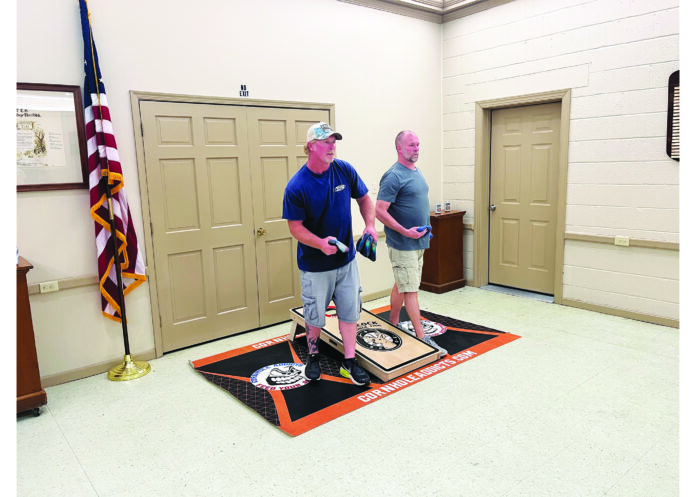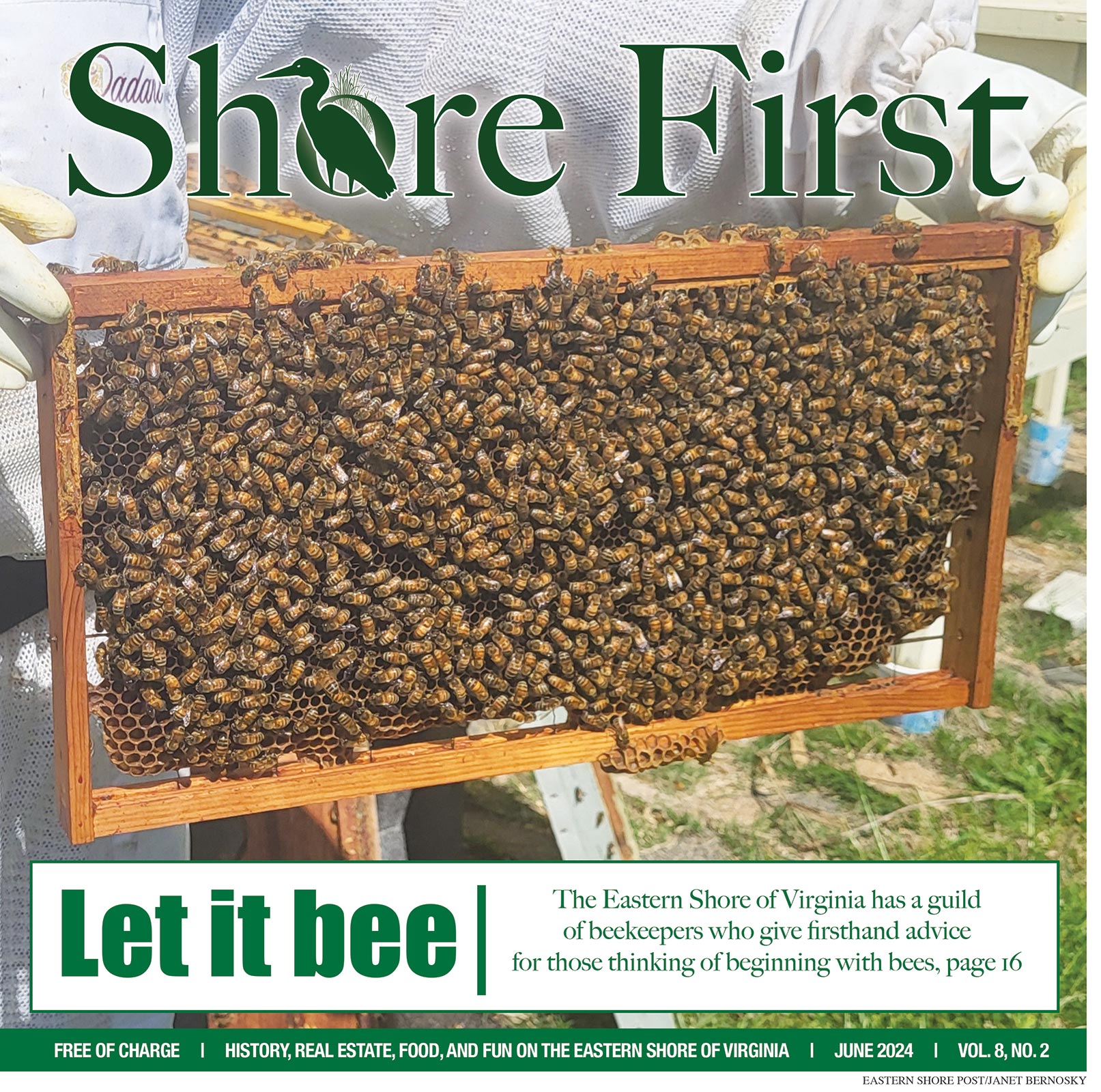
BY RYAN WEBB, Shore First
The weather is warming up and you know what that means. It soon will be the season for beach days, cookouts, and cornhole!
A popular pastime on the Eastern Shore, cornhole is a game played with two sets of four bags, two boards, and two to four players.
The object of the game is to score points by throwing bags onto the board (1 point) or into the hole (3 points). The match is divided into frames.
In a frame of cornhole, two players alternate tossing one bag at a time until all eight bags have been thrown.
Ater all of the bags have been thrown, cancellation scoring is used to determine how many points should be added to the overall score.
In cancellation scoring, whichever player or team scores higher is awarded points equal to the difference between both sides. Yes, there is simple math involved.
For example, if a player on Team Mainlanders throws all four of its bags in the hole, that’s 12 points. If their opponent on Team Teaguers throws three bags in the hole and one bag on the board, that’s 10 points. In this scenario, Team Mainlanders earns two points towards the overall score because 12-10 = 2. Play continues until someone reaches or surpasses 21 points.
The bags, which once were filled with corn kernels (hence the name cornhole), measure 6 inches by 6 and weigh approximately a pound.
Nowadays, bags are filled with plastic resin beads that don’t break down like the old corn-filled bags did, and many are dual sided so that there is a “slick” side and a “sticky” side.
As the terms suggest, the “slick” side tends to slide faster on the board than the “sticky” side. The “slick” side is preferred in humid conditions and is used to push bags into the hole, while the “sticky” side is usually thrown when a player wants to block an opponent from getting into the hole or wants to play a bit safer and ensure a bag doesn’t slide off the board.
The boards are simple two-by-fours topped with plywood and feature a 6-inch diameter hole positioned 9 inches from the top center edge of each board, which is angled with the top edge of the playing surface 12 inches above the ground, and the bottom edge 3–4 inches above the ground.
A standard court places the two boards 27 feet apart, measuring from the front edge of the boards.
The areas immediately to the left and right of the boards are the pitcher’s boxes. The pitcher’s boxes extend from the front of the board to the back of the board and are three feet wide.
The line (either drawn or imaginary) extending from the bottom edge of the board in both the left and right direction is the foul line, which players cannot cross while throwing a bag.
With all of that out of the way, here are some tips that will have you dominating your cornhole competition this summer.
Eliminate randomness by throwing a flat bag. You want the bag to land flat because it will have a predictable trajectory once it lands. A normal right handed player’s bag will travel from left to right when it lands on the board, while a normal left handed player’s bag will travel from right to left.
Check out this video: https://tinyurl.com/38t7u6nf
Minimize movement for ease of replication. Consistency is key. Some players take a step, but I recommend positioning yourself at the front of the board, just behind the foul line, and remaining still. Find a stance that is comfortable for you.
I’m right handed and I place my right leg forward. Then I bring my arm in a straight line to my thigh and release the bag while swinging my arm towards the other board.
Pay attention to your follow through. I focus on releasing the bag with my hand pointing at the hole or slightly to the left of the hole to account for my bag’s left-to-right trajectory once it lands on the board.
Aim small, miss small. Focus on a particular place you want the bag to land. I don’t focus on the hole unless I’m trying to hit an airmail (or Kobe) shot that lands directly in the hole instead of sliding.
I usually pick a spot on the logo or graphic on the board and aim for that every time I want to slide in the hole. When warming up, pay attention to where the bag hits the board when you make a good slide shot.
Give yourself good angles to the hole. Utilize all of the space available in the pitcher’s box. If an opponent has blocked you, most of the time all you need to do is take a step over and give yourself a clean shot to slide in the hole.
Slide the bag into the hole. Your slide shot should be your primary shot. It is less risky because even if you miss the hole, your bag has a better chance of staying on the board than it does if all you’re shooting are airmail shots.
Take your time. You have 20 seconds to throw your bag after your opponent has already thrown. You don’t have to rapid fire. Take a deep breath and focus on where you want to place the next bag.
Play smart. If your opponent messes up and leaves you a backboard or bumper, use that to help guide your bag into the hole. Take the points that are given to you when your opponent makes a mistake. Don’t get greedy. Every point counts.
Give your partner first throw. First throw is awarded to the team that has scored last. When you get a chance to take back first throw, play smart and make sure you get that one point. First throw is a huge advantage because you get to set the pace for the round. You also get an open board to throw at, whereas the person who throws second may have to contend with a blocker bag or the pressure of the first person having made their bag.
Utilize the different sides of the bag for different shots. You should throw blocking bags with the sticky side. I also throw airmails with the sticky side. Depending on how fast the boards are playing, I’ll throw slide shots with either the sticky or slick sides. You should push your bags closer to the hole with the slick side.
And there you have it! Follow these tips and take your game to the next level. Maybe I’ll see you at the Fourth of July tournament in Cape Charles. The competition will be stiff, so don’t expect anyone to take it easy on you, especially not me.



